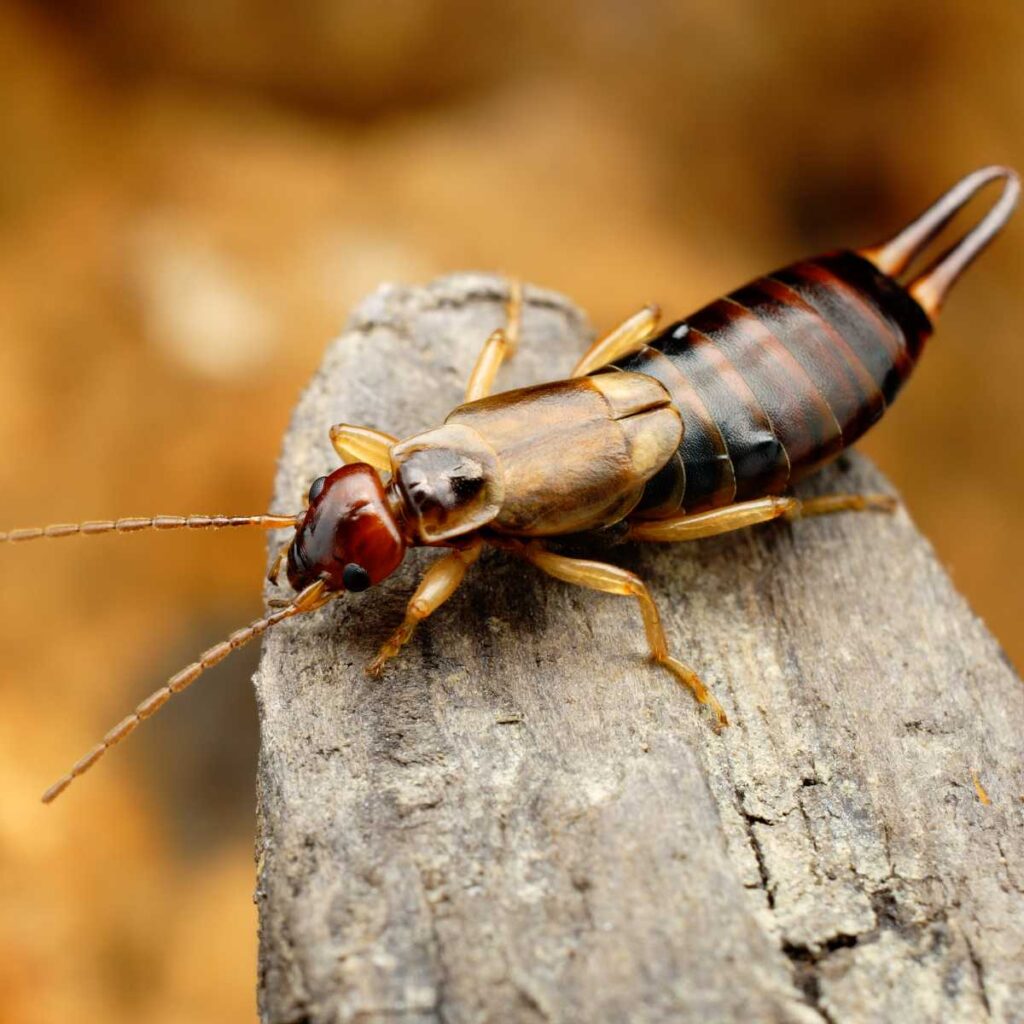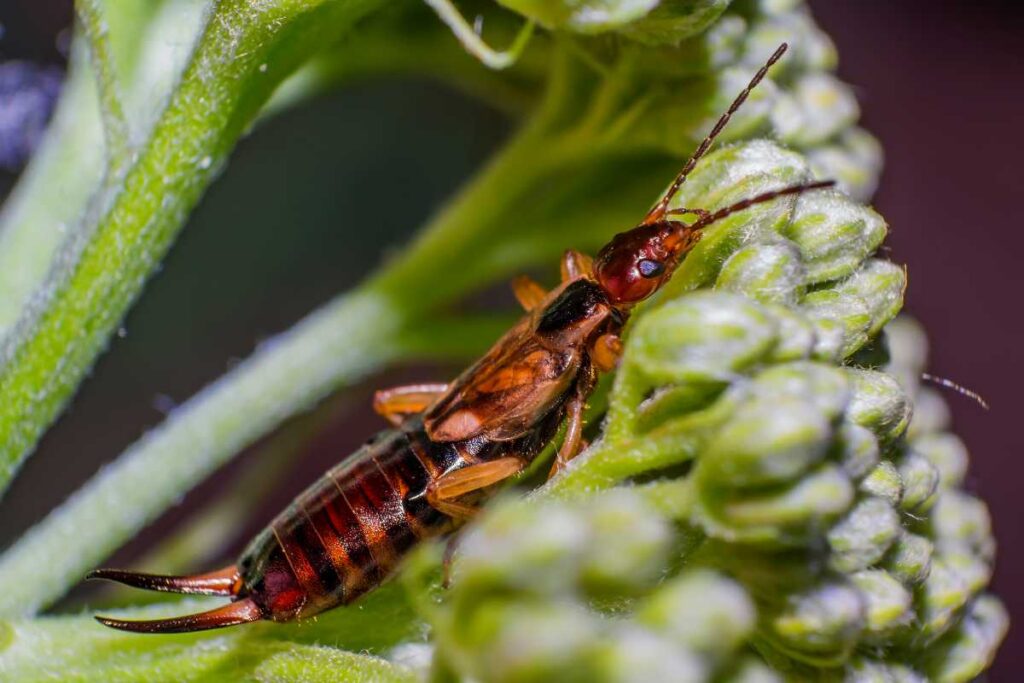Last Reviewed and Updated on February 4, 2023
Earwig’s distinctive appearance, with a long, narrow body and pincers on their abdomen, these small insects are feared by many. But is this fear justified? Read on and learn some of the most fascinating facts about earwigs, from their life cycle to their impressive maternal care.

About Earwigs
Earwigs are insects with characteristic long pincers on their abdomen, although not all species exhibit them. Most species are flattened, which allows them to fit into tight crevices.
There are roughly 2000 different species of earwigs, making this group one of the smallest insect orders.
They can be found throughout the Americas and Eurasia. Most species are nocturnal and spend their days hiding in small crevices.
Most species feed on organic matter (animals and plants), but some species have other unique diets.
After mating, in most species of earwigs, a female earwig lays 20 to 80 eggs. Some earwig species also give birth to live young.
Interesting Facts About Earwigs
Ready to dig deep into some of the most fun facts about earwigs? Let’s go!

1. Many female earwigs are great mothers
Many, but not all, earwig species display strong maternal care, which is unusual when it comes to insects. With these species, the female earwig will care for her eggs and even nymphs as they hatch from the eggs.
2. Earwigs don’ climb into the ear canal
One of the most popular myths (and fears) when it comes to earwigs is that they will climb into your ear and even damage your eardrum. Luckily this is just a myth. Earwigs don’t purposely climb into ear canals, and there have been only a couple of anecdotal reports of earwigs being found in the ear.
The origin of their name, the earwig, is more likely a reference to their wings which, when extended, resemble a human ear.
3. Australian giant earwig is the largest earwig
The largest known living earwig species is the Australian giant earwig (Titanolabis colossea), as it is approximately 2 inches / 5 centimeters long.
4. Earwigs use their pincers to catch prey and for defense
Earwigs have a pair of forceps-like pincers on their backside, which are used to capture prey (for species that hunt), for defense, and for folding their wings.
5. They undergo a series of four to six molts in their life
Earwigs undergo incomplete metamorphosis; they develop through a series of four to six molts, where they cast off parts of their body at a specific time of their life cycle. The stages of their life cycle between the molts are called instars.
6. Males have curved pincers, and females have straighter pincers
After earwigs mold for the last time and become adults, the pincers of male earwigs become curved, while the pincers of females remain straight.
7. Lined earwigs can squirt foul-smelling liquids
The lined earwig (Doru taeniatum) has an interesting defense mechanism. It has scent glands from which it can squirt foul-smelling yellow liquid at its predators (source).
Similar defense mechanisms have been observed in some other earwig species as well.
8. Some earwigs have two penises, and some have one
In all species, females only have one genital opening, though.
Male earwigs from the families Karschiellidae, Pygidicranidae, Diplatyidae, Apachyidae, Anisolabisidae, and Labiduridae have paired penises. All other species of earwigs have a single penis.
8. Species in the suborder Arixennia and Hemimerina live on the outside of other animals
Most species of earwig live on the land. But species in the suborder Arixennia and Hemimerina found their home inside skin folds and pouches of other animals, especially bats. These earwigs feed on the secretions of these animals.
Found this fascinating? You are going to love our list of 100 weird animal facts.
